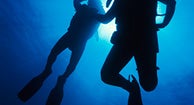

It is devoted to serving and supporting all who explore, travel, work, or live in hazardous environments ranging from beneath the sea to the outermost reaches of space. This journal (formerly Aviation, Space, and Environmental Medicine), representing the members of the Aerospace Medical Association, is published monthly for those interested in aerospace medicine and human performance. Most cases resolved within a week however, barotrauma showed persistence or relapse in some cases. Symptoms and endoscopic findings showed some association with the grade and duration of barotrauma. The grade of barotrauma varied significantly according to the severity of turbinate hypertrophy and nasal discharge. While turbinate hypertrophy was seen in 53 cases (93.0%) and increased nasal discharge in 33 cases (57.9%). Septal deviation was observed in 12 cases (21.0%), Most cases were Grade 0 (23 cases, 40.3%) or Grade III (27 cases, 47.4%) according to Teed’s classification. Stuffy nose (26 cases, 45.6%) and rhinorrhea (24 cases, 42.1%) were relatively common. Ear fullness was reported in all cases, while hearing loss and persistent ear pain were reported in 3 cases Two subjects (3.9%) had chronic rhinosinusitis and four subjects (7.8%) had allergic rhinitis. Were 49 cases (86.0%) that showed unilateral disease and 4 subjects experienced relapse. RESULTS: There were 57 cases in 51 pilots included. The relationship between middle ear barotrauma and the nasal airway was also evaluated. This study included nasal symptoms, endoscopic findings of the nasal cavity, and clinical course (duration, recurrence). The grade of barotrauma was assigned using Teed’sĬlassification. METHODS: The authors reviewed medical records of student pilots with barotrauma. INTRODUCTION: The present study reports the clinical features of middle ear barotrauma in student pilots in the Republic of Korea Air Force.


 0 kommentar(er)
0 kommentar(er)
